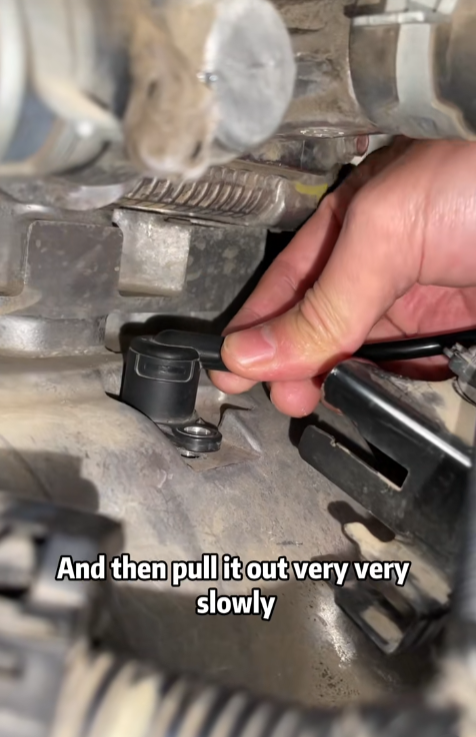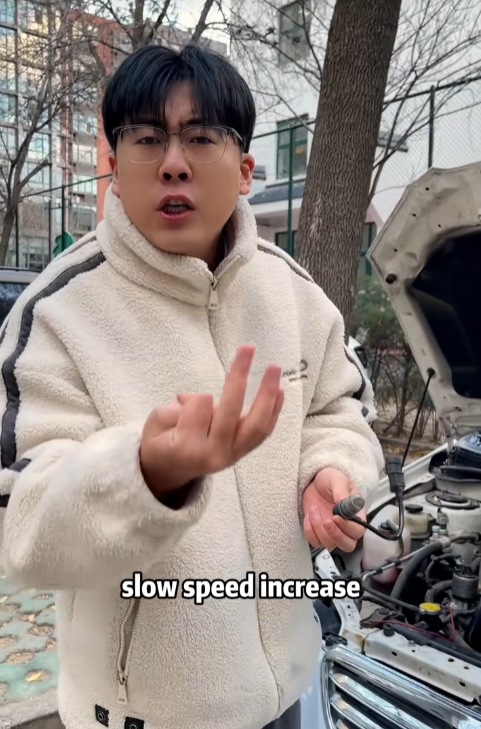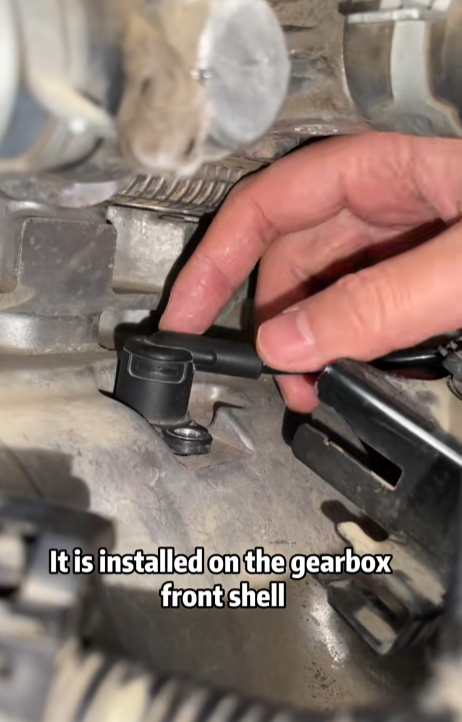
Having a car with insufficient power and high fuel consumption can be both frustrating and expensive. If you find that your vehicle isn’t performing as it should—whether it’s sluggish acceleration or draining fuel at an alarming rate—it’s essential to address the root causes. A number of factors can contribute to poor power output and excessive fuel consumption, but fortunately, there are practical solutions. This guide will explore the common causes and provide actionable steps to help you optimize both power and fuel efficiency.
Understanding the Causes of Insufficient Power and High Fuel Consumption
Before diving into solutions, it’s crucial to understand the key factors that might be causing your car to struggle with power and consume more fuel than necessary. Here are some common culprits:
1. Engine Performance Issues
The engine is at the heart of your vehicle’s power, and any issues here can severely affect performance. Problems like dirty or clogged air filters, worn-out spark plugs, and faulty fuel injectors can cause poor fuel combustion, leading to sluggish acceleration and inefficient fuel use.
2. Poor Aerodynamics
Aerodynamics play a significant role in fuel consumption, especially at higher speeds. If your car has modifications that increase drag, or if it’s carrying extra weight on the roof, it can result in higher fuel consumption.
3. Tire Pressure
Low tire pressure increases rolling resistance, forcing the engine to work harder to move the car. This can reduce power and fuel efficiency, particularly when driving on highways or at high speeds.
4. Dirty Fuel System
A clogged or dirty fuel system—whether the fuel injectors or the fuel filter—is another possible culprit for both low power and high fuel consumption. If fuel isn’t being delivered efficiently to the engine, it can cause stalling, poor acceleration, and wasted fuel.
5. Excess Weight in the Car
Cars that are overloaded or carrying unnecessary weight require more power to move, which leads to higher fuel consumption. Things like heavy items in the trunk or a roof rack that isn’t being used can add significant weight and drag.
6. Driving Habits
Aggressive driving habits, such as rapid acceleration, harsh braking, and speeding, can drastically increase fuel consumption while also causing unnecessary wear and tear on the engine, reducing overall power.
7. Transmission Issues
A malfunctioning or poorly tuned transmission can result in inefficient shifting. When your transmission is not shifting at the optimal times or is malfunctioning, it can cause excessive fuel consumption and prevent the engine from utilizing its full power.

Solutions for Insufficient Power and High Fuel Consumption
Once you have a clear idea of what might be causing the issues, it’s time to address them. The good news is that most of these problems can be fixed with some regular maintenance and minor adjustments. Below are steps you can take to improve both power output and fuel efficiency:
1. Regular Engine Maintenance
A well-maintained engine runs more efficiently, producing the power you need and consuming less fuel. Regularly checking and maintaining your engine is one of the best ways to ensure peak performance.
- Replace Air Filters: Dirty or clogged air filters restrict airflow to the engine, reducing fuel combustion efficiency. Replacing air filters regularly will help the engine breathe easier and perform better, improving both power and fuel efficiency.
- Change Spark Plugs: Spark plugs that are worn or faulty can lead to engine misfires, poor acceleration, and inefficient fuel use. Changing your spark plugs every 30,000 to 50,000 miles can keep your engine running smoothly.
- Clean or Replace Fuel Injectors: Fuel injectors that are dirty or clogged will disrupt the fuel delivery to the engine, causing it to struggle and consume more fuel. Cleaning or replacing fuel injectors ensures that fuel is injected in the right amounts and at the right time for optimal engine performance.

2. Optimize Aerodynamics
Your car’s aerodynamics play a major role in how much fuel it consumes, particularly at higher speeds. Improving your vehicle’s aerodynamics can reduce drag and improve fuel efficiency.
- Remove Roof Racks When Not in Use: Roof racks increase wind resistance and drag, which forces your engine to work harder to maintain speed. If you don’t need the roof rack, remove it to reduce drag.
- Keep Windows Closed at High Speeds: Driving with the windows open creates additional drag. While this is less of an issue at lower speeds, it can significantly reduce fuel efficiency at highway speeds. Keep your windows closed to optimize aerodynamics.
- Consider a Body Kit: Some cars can benefit from body kits designed to reduce drag and improve aerodynamics. This may not be necessary for every car, but for certain models, it can have a noticeable impact on fuel efficiency.
3. Check and Maintain Proper Tire Pressure
Maintaining the correct tire pressure is one of the simplest and most effective ways to improve fuel efficiency. Underinflated tires increase rolling resistance, making the engine work harder and reducing fuel economy. Tires that are overinflated can also be dangerous and reduce traction.
- Regularly Check Tire Pressure: Use a tire pressure gauge to check your tires at least once a month. Ensure they are inflated to the manufacturer’s recommended levels.
- Rotate Tires Regularly: Regular tire rotations help ensure even wear and can contribute to better fuel efficiency. This also helps extend the lifespan of your tires.
4. Keep the Fuel System Clean
A clean fuel system ensures that fuel is being delivered to the engine efficiently. A clogged or dirty fuel system can result in wasted fuel and poor power output.
- Use Fuel System Cleaners: Periodically adding a fuel system cleaner to your gas tank can help remove dirt, grime, and other contaminants from the fuel system, including the injectors and fuel lines.
- Replace Fuel Filters: A clogged fuel filter can disrupt fuel flow and cause the engine to run inefficiently. Replacing the fuel filter at regular intervals (typically every 20,000 to 40,000 miles) will prevent this issue.

5. Remove Excess Weight
Reducing the weight of your car will improve its fuel efficiency and power output. Excess weight forces the engine to work harder and consumes more fuel, especially during acceleration.
- Clear Out the Trunk: Remove unnecessary items from your car to reduce weight. Every 100 pounds can reduce fuel efficiency by up to 2%.
- Take Off Unused Roof Boxes: If you don’t need the roof box or cargo carrier, take it off. It adds both weight and drag, which increases fuel consumption.
6. Modify Driving Habits
Your driving style has a direct impact on both car power and fuel efficiency. By changing some of your habits, you can significantly reduce fuel consumption and improve overall engine performance.
- Drive Smoothly: Avoid rapid acceleration and harsh braking, both of which waste fuel and stress the engine. Instead, accelerate gradually and brake gently when necessary.
- Maintain Steady Speeds: Use cruise control when driving on highways to maintain a consistent speed. This helps improve fuel efficiency and reduces unnecessary power loss.
- Avoid High Speeds: Driving at higher speeds increases wind resistance and fuel consumption. Try to keep your speed below 65 mph when possible for optimal fuel economy.

7. Fix Transmission Problems
A malfunctioning transmission can result in inefficient shifting, causing the engine to overwork and burn more fuel. If you notice that your car is struggling to shift gears or if you experience slipping gears, it’s time to have the transmission checked.
- Check Transmission Fluid: Ensure that your transmission fluid is at the proper level and in good condition. If the fluid is dirty or low, it can cause shifting problems that reduce both power and fuel efficiency.
- Repair or Replace the Transmission: If your transmission is severely malfunctioning, it’s crucial to have it repaired or replaced to restore engine performance and fuel economy.
Conclusion
Solving the problem of insufficient car power and high fuel consumption involves a combination of maintenance, good driving habits, and simple adjustments to the vehicle. Regular engine maintenance, optimizing aerodynamics, maintaining proper tire pressure, and addressing weight and fuel system issues are all key to improving performance. By making these changes, you can enhance your car’s power, reduce fuel consumption, and ultimately save money on fuel and repairs. Start implementing these solutions today, and enjoy a smoother, more efficient driving experience!



